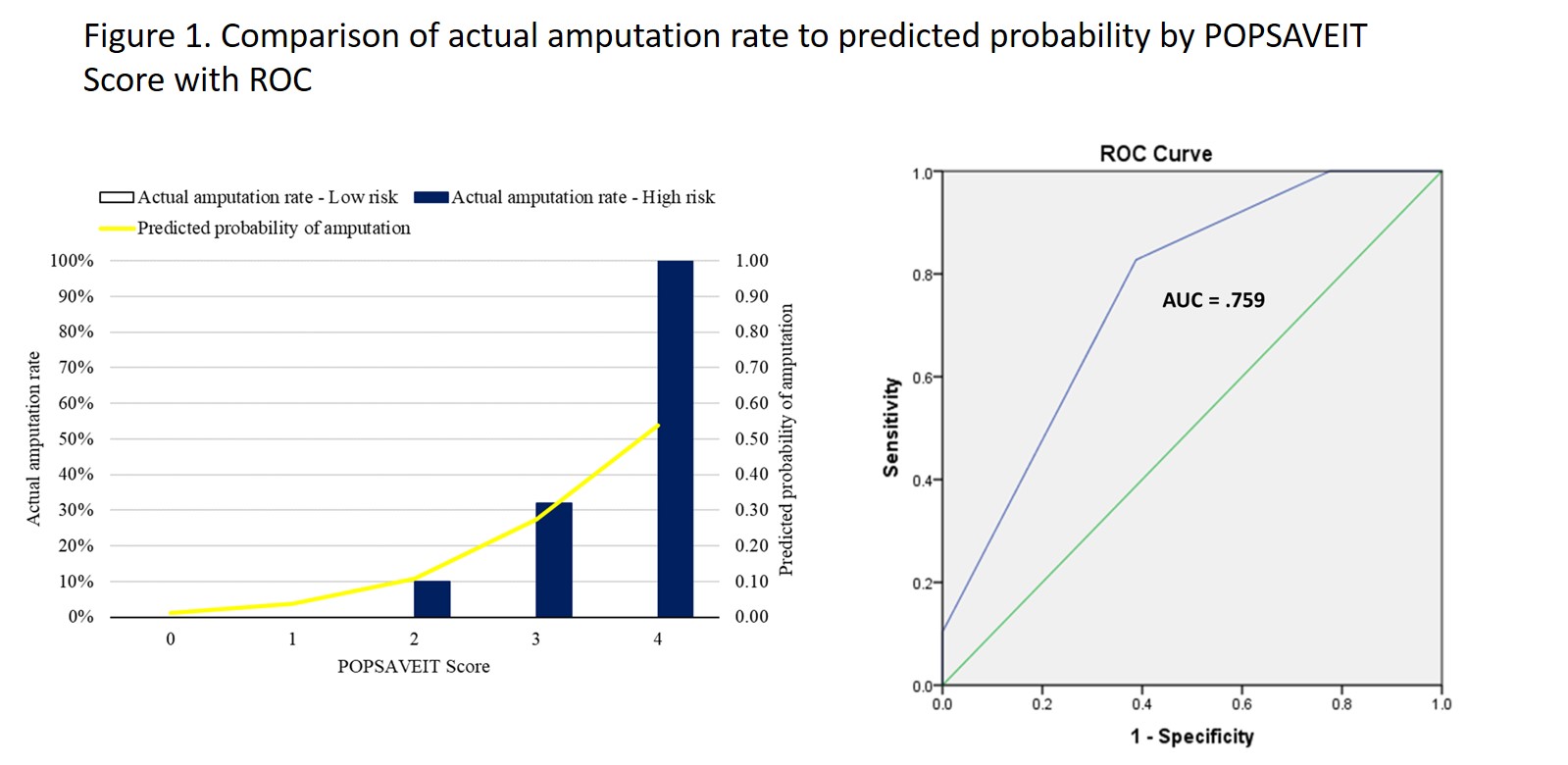Popliteal Scoring Assessment For Vascular Extremity Injuries In Trauma (POPSAVEIT) Fulfills The Need For A New Reporting Standard In Lower Extremity Vascular Trauma
Leigh Ann O'Banion, MD1, Rachel Dirks, PhD1, Nallely Saldana-Ruiz, MD, MPH2, Sammy Siada, DO1, Emaad Farooqui, MD1, Cara Pozolo, MD3, William Yoon, MD3, Amani Politano, MD, MS4, Gabriel Nager, BS4, Benjamin Brooke, MD, PhD5, Julie Beckstrom, RN, MS5, Charles Fox, MD6, Alexis Cralley, MD7, Mark Nehler, MD8, Sharon Kiang, MD9, Hans Boggs, MD9, Venita Chandra, MD10, Vy T. Ho, MD10, Wei Zhou, MD11, Ashton Lee, MD11, Nina Bowens, MD12, Yan Cho, MD12, A Woo, MD, PhD13, Jesus Ulloa, MD13, Shant Vartanian, MD14, Christina Kuhrau, BA14, Nii-Kabu Kabutey, MD15, George Kopchok, BS15, Gregory A. Magee, MD, MSc2.
1UCSF-Fresno, Fresno, CA, USA, 2USC, Los Angeles, CA, USA, 3UC Davis, Sacramento, CA, USA, 4OHSU, Portland, OR, USA, 5University of Utah, Salt Lake City, UT, USA, 6University of Maryland Medical Center, Baltimore, MD, USA, 7Denver Health, Denver, CO, USA, 8University of Colorado, Denver, CA, USA, 9Loma Linda University, Loma Linda, CA, USA, 10Stanford University, Palo Alto, CA, USA, 11University of Arizona, Tuscon, AZ, USA, 12UCLA Harbor, Los Angeles, CA, USA, 13UCLA, Los Angeles, CA, USA, 14UCSF, San Francisco, CA, USA, 15UC Irvine, Irvine, CA, USA.
Objective: Traumatic popliteal artery injuries portend the highest risk of limb loss of lower extremity vascular trauma. Numerous studies have demonstrated the need for a revised, simplified, and objective scoring system, which can be used as a reporting standard rather than a preoperative determination of limb salvage. POPSAVEIT (Popliteal Scoring Assessment for Vascular Extremity Injuries in Trauma) is a score which provides a simple and practical means to stratify amputation risk at the time of initial patient assessment. This study aims to validate a revised POPSAVEIT score across multiple US institutions to demonstrate its effectiveness and generalizability at limb salvage stratification. Methods: Patients enrolled in the POPSAVEIT study were evaluated and those that were analyzed in previous studies were excluded. The revised POPSAVEIT score was defined as 1 point for each of the following: SBP <90 mmHg, associated orthopedic injury (long bone fracture or dislocation), blunt mechanism of injury, and lack of preoperative pedal Doppler signals or palpable pulses. The aim was to determine how accurately the score’s predicted probability of amputation estimated actual risk of amputation in this cohort. For the purposes of a sensitivity and specificity analysis, a score of ≥2 was defined as high-risk for amputation, and a receiver operator characteristic (ROC) curve was generated with an area under the curve (AUC) of >0.65 considered adequate for validation. Results: 146 patients with popliteal artery injures were evaluated and the overall amputation rate was 20%. 31 patients were not revascularized of which 9 had primary amputation. Amputation rates were highly correlated with POPSAVEIT score and closely estimated by predicted probability of amputation. 0/26 patients with a score < 2 underwent amputation vs 29/119 (24%) with a score ≥2 (P=0.005). The ROC curve generated had an AUC of .759 meeting validation criteria. Figure 1. Conclusion: POPSAVEIT score provides a simple, effective, and practical preoperative tool to stratify amputation risk. This score may fulfill the need for an improved reporting standard in lower extremity vascular trauma.

Back to 2022 ePosters
